Summer residents' tips: how to grow buckwheat in your area
For a long time, the inhabitants of our country were engaged in the cultivation of such a food crop as buckwheat. It was brought to the middle zone of Russia in Asia quite a long time ago. The main sphere of use of this culture is food, since the dishes prepared from it were distinguished by a unique taste and ease of preparation. In addition, buckwheat is good for health, thanks to the vitamins and minerals it contains. Many amateur gardeners are interested in the issue of growing this crop in the conditions of their personal plot or summer cottage. Let's try to consider all the tricks of the agricultural technology for growing buckwheat in the country.
Content:
- Choosing a suitable site for planting buckwheat
- Soil preparation
- Buckwheat predecessors
- Sowing and caring for buckwheat
Choosing a suitable site for planting buckwheat
It is possible to grow buckwheat in the country not in all climatic zones, but only in optimal conditions for it. In our country, it is grown in the middle lane. By choosing a suitable soil area, be sure to determine the type of soil, since you may not get a rich harvest from a crop on poor soil fertility.
Before sowing, it is necessary to apply fertilizers, and if you plant buckwheat in black soil, then you need to fertilize the soil with phosphorus fertilizers, for example, phosphate rock.
In cases of growing this crop, in the conditions of existing alkaline or podzolic soils, it is necessary to enrich them with nitrogen fertilizers. Such fertilizers can be ammonium sulfate. Also, for buckwheat growing on the podzolic horizon, potash fertilizers are needed, in the form of potassium magnesia, which does not contain chlorine.
As you know, the chlorine contained in a bound form in the soil is destructive for the cultivation of this crop. In the conditions of the location of the dacha in the zone of gray forest soils, where the fertile layer is rather poor, it is necessary to apply the entire complex of mineral fertilizers. A folk remedy for increasing soil fertility for buckwheat is the introduction of wood ash into the soil. For sowing buckwheat in the country, careful processing of the selected area is necessary. Basically, the soil for buckwheat is treated in the same way as for sowing grain crops.
Soil preparation
For buckwheat, autumn plowing or digging of a small plot of the dacha is necessary. Usually they dig or plow to a depth of twenty centimeters. In the spring, to preserve moisture from melting snow, snow retention should be done, or moisture should be covered from losses.
Be sure to cultivate the soil in the spring with appropriate devices. A suburban walk-behind tractor is ideal for these purposes. Having loosened the top layer of the soil, it is harrowed, in order to determine the places-depressions for the seeds. It is not advisable to plow or dig up the plowing in the country in the spring in order to prevent the loss of spring moisture in the soil.
Digging a summer cottage for buckwheat in the spring is necessary in case of excessive moisture or strong compaction on the ground.
When various weeds or their organs are found on the soil, which can lead to reproduction, they should be selected so that there is no clogging of the area with weeds.
Buckwheat predecessors
For buckwheat, one of the best predecessors is leguminous crops. Therefore, on the selected plot of the dacha for planting this crop, it is necessary to plant any winter crops or legumes a year before sowing. This is especially important for summer residents living in the forest-steppe zone. In addition to legumes, good predecessors for buckwheat are:
The use of green fertilizers as precursors for buckwheat is also beneficial for obtaining a high yield. Buckwheat itself is a good predecessor for oats, potato crops, crops of corn or rye, sugar beet plantations.
Sowing and caring for buckwheat
To obtain good and friendly buckwheat shoots in the country, it is necessary to use zoned seeds for the climate of the area. It is not worth relying on imported, including from the southern regions, seed material, since you may not get a high yield. To ensure good germination of seeds, many gardeners at their dachas treat them with micronutrient fertilizers containing a certain amount of molybdenum ammonium in their composition. By the way, boric acid can also be used for these purposes.
Tips for sowing buckwheat:
- Sowing buckwheat begins when the soil warms up well, usually in the last decade of May or the first decade of June. It was at this time that the manifestation of morning frosts, to which buckwheat is so sensitive, no longer occurs.
- Selected selective and large seeds can be sown in wide rows.
- Many summer residents sow buckwheat using the grandfather's method - randomly.
- The seeds are sown into the soil to a depth of four to eight centimeters.
- If necessary, a small loosening of the upper soil layer should be performed, since the crust formed on it from irrigation may prevent the seedlings from breaking through to the top.
- After sowing, buckwheat must be watered abundantly.
Buckwheat grows quite quickly and is accompanied by the displacement of existing weeds from this area. Before buckwheat enters the flowering phase, it must be well watered. If weeds appear repeatedly on the site, they should be weeded. And in the middle of summer, hilling plants. In this way, you can achieve the growth of the root system and get a good harvest.
The areas where buckwheat grows are carefully laced by the summer resident in order to prevent the fall of ripe plants in rainy weather.
In order to protecting buckwheat plants from various pests treat the areas with special insecticides. At the same time, it is worth remembering the bees gathering on the blooming buckwheat. In this case, it is better not to release the plants from the hive during the pollination period in order to prevent their mass death.
When the flowering tops of buckwheat appear in the last decade of August, summer residents cut them off to direct the nutrients to the ripening lower tiers. Buckwheat is harvested in mid-September, preferably before the onset of autumn frosts. After harvesting, the seeds are well dried and sorted, after which they can be used to prepare various dishes.
A video from which you can see how buckwheat blooms.





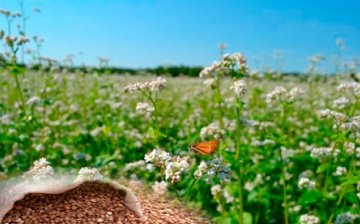







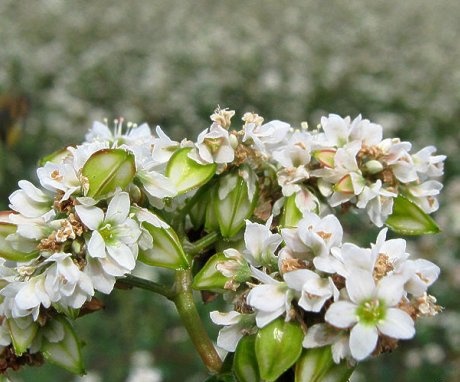
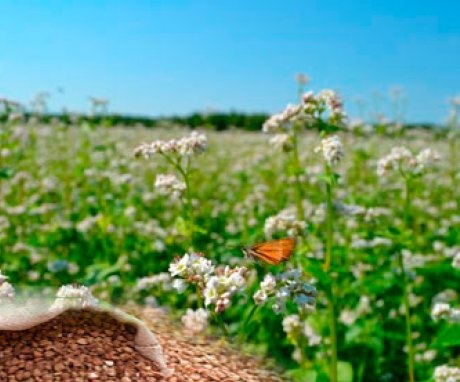
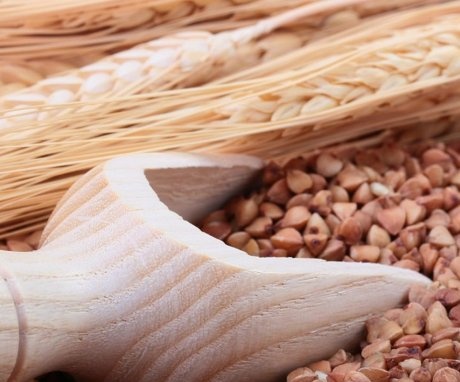
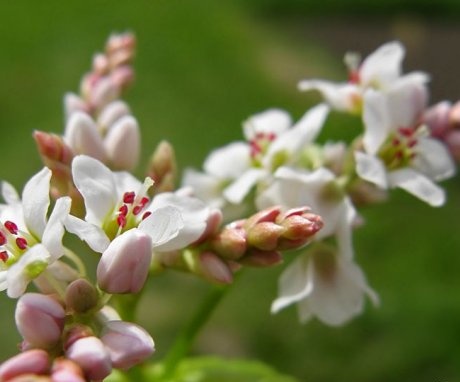
I love buckwheat very much, it is tasty and healthy, unlike any fast food. I did not try to grow it myself, since it is a small plot. I think that it is convenient to grow it for those who have their own apiary, and there will be buckwheat honey.